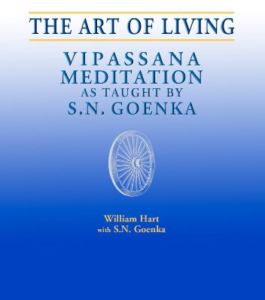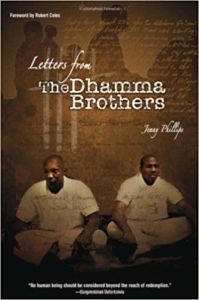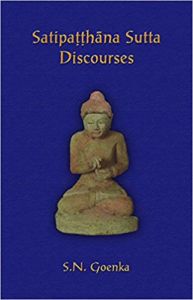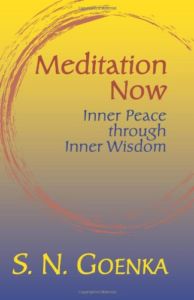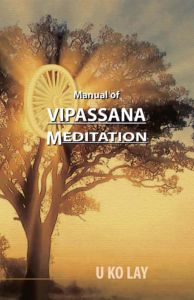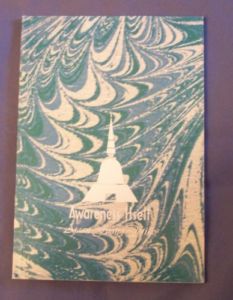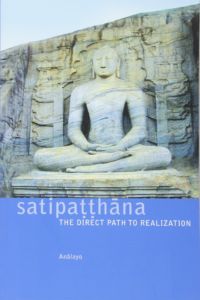Vipassana is among the oldest styles of meditation in India. Defined as a way to perceive things according to their very true nature, Vipassana was revived by Gotama Buddha nearly three thousand years ago and imparted the meditative technique as a universal treatment to a wide range of illnesses.

It’s unnecessary to travel as far as India and other parts of Asia, where Vipassana is taught and practiced to understand its fundamental principles. With the right book on Vipassana Meditation, you will have everything you need to start harnessing the power of this ancient method of meditation.
This review compares ten of the best books on Vipassana Meditation. Each book offers a distinctive approach to teaching Vipassana to readers and is also among the top reads recommended by both Vipassana practitioners and teachers alike.
Top 10 Books on Vipassana Meditation
1. The Art of Living By Author William Heart
An in-depth reading about the teachings of S.N. Goenka, created under his supervision and approval. The book is effective for people who practice meditation and those who don’t as well. This book was the first copy to be written in English that precisely depicts the way of Vipassana in full-length for the average reader. The book covers tales by Goenkaji and, at the same time, sheds light on numerous different questions made by readers, which express a unique sense of his philosophy.
Pros:
The book reveals the Vipassana method -“the development of insight'”- which exemplifies the core of the philosophy of Buddha, bringing to light an exceptionally straightforward and helpful course towards self-awareness that features only a few dogmas and at the same time offers superb results. The Vipassana method can be effectively used by any person regardless of their current knowledge and experience on the subject.
Cons:
The book is an opener to further courses that practice the method of Vipassana by Goenka. This method is not appreciated by many who practice yoga and meditation.
2. Letters from the Dhamma Brothers: Meditation Behind Bars By Jenny Phillips
Through profound telegrams, dialogues, and tales, the Letters from the Dhamma Brothers: Meditation Behind Bars portrays the significant influence that a life-altering retreat had on a band of prisoners held at a top-level maximum-security state prison in Alabama, USA. The nearly 40 contributors of this first of its kind rigorous, quiet 10-day course was conducted within the premises of a detention center – a lot of whom were sentenced to life without parole. It describes the extent of their undergoing, the profundity of their knowledge of the principles and ways taught by Buddha obtained through personal experience, and their obstacles and achievements.
Pros:
This book demonstrates the ability of the human spirit to commit, self-examine, renew and have faith inside a miserable correction system and a more extensive belief that portrays prisoners as wicked and threatening human beings.
Cons:
The book is about rehabilitation through Vipassana. This topic remains debatable on approaches to criminal justice, particularly whether to rehabilitate or punish criminals.
3. Satipathdha Sutta Discourses By S.N Goenka
An abbreviated form of the teachings of S.N. Goenka from a one-week meditation program on the Mahasatipatthana Sutta. Goenkaji recipes and explains the sutta, providing life and inspirational significance to the main manuscript of the Buddha around meditative exercise.
Pros:
Satipathdha Sutta Discourses is primarily designed as a complementary book to people practicing the Satipatthana course as imparted by S.N. Goenka.
Cons:
The book is quite advanced because of plenty of extensive quotes written in Pali. At the same time, it fails to offer a well-defined clarification of the meditation technique that is portrayed in the sutta. However, if you have some experience with the practice as taught by S.N Goenka, the book will prove to be a superb source of information because of its mainly advanced elements.
4. An Ancient Path: Talks on Vipassana Meditation as Taught by S.N. Goenka By Paul R. Fleischman
The discourses made by Dr. Paul Fleischman involving Vipassana meditation based on the teachings of S. N. Goenka deals with topics like mental well-being, being mindful, and nurturing a sense of peace from within. An Ancient Path: Talks on Vipassana Meditation as Taught by S.N Goenka is a helpful primer to Vipassana meditation and an inspirational source of information for people who currently practice it.
Pros:
Fleischman offers an unparalleled view and demonstration of meditation through a mentally healthful point of view.
Cons:
The points presented were repetitive. And it’s not necessary for you to be a mental health expert to take advantage of the wealth of wisdom and knowledge that the book offers.
5. Meditation Now: Inner Peace through Inner Wisdom
The world-famous Vipassana meditation lecturer S. N. Goenka explains the very teachings of Buddha in this assembly of lessons, articles, and personal dialogues. This book offers awareness among the most powerful modern-day Buddhist experts. It describes Vipassana and how he utilizes it to attain internal peace and follow a happy, productive life. Covered within the book are texts of the latest lectures made at the World Economic Forum in Davos and the Millennium World Peace Summit and a recently unpublished talk led by Alan AtKisson, previous editor of the In-Context magazine.
Pros:
The book outlines the transformative approach of Vipassana by Goenka. It serves as a guide to the practice for beginners and advanced yogis alike. It serves as a reference or reading book for those who are interested in the topic of meditation and Vipassana.
Cons:
The book is a starter for a ten-day course on Vipassana by Goenka. Others may not appreciate the practice in actuality.
6. Mastering the Core Teachings of the Buddha: An Unusually Hardcore Dharma Book By Daniel M. Ingram
Writer Daniel M. Ingram postulates that enlightenment is a realistic possibility and contends that meditation is a means to examine the truth. Nevertheless, Ingram maintains that enlightenment is something that we can achieve the moment we depart from our imaginary ideas and understand how to utilize meditation to examine reality instead of considering it a chance to flounder on self-regarding mental noise.
Pros:
The author demonstrates precisely the distinction between two Vipassana meditations: one based on concentration and the other from insight. In the comparison, Ingram offers illustrative practices. Most importantly, he imparts detailed charts of every state of mind we will possibly run into and each stage you need to cope with as you move past accurately defined sets of insight.
Cons:
It won’t be hard to become intimidated, at the start, by the author’s guarantee and comfort in the advanced stages of consciousness. However, Ingram constantly sounds extraordinarily humble and sympathetic as a teacher needs to be to practitioners who are open to pledging themselves to its principles and teachings.
7. Manual of Vipassana Meditation By U Ko Lay
The Manual of Vipassana Meditation is essentially an interpretation of the Dhammacakka Sutta and the Greater Satipatthana Sutta. The Manual of Vipassana Meditation covers interpretations of the three most vital sutta by the Buddha and notaries regarding them. The first two dissertations of Buddha and Satipatthana Sutta are covered in the book as well.
Pros:
The three discourses are incredibly vital when we are talking about practicing meditation. It is an imperative book if you have undergone some Theravada Buddhist meditation and desire to achieve some powerful ideas on the ways Buddha himself taught meditation.
Cons:
It derives knowledge from the Satipatthana on the possible ways our senses can use mindfulness. However, it will not undergo the actual method of Vipassana that is utilized in Vipassana retreats. Nonetheless, it remains an excellent book for people ready to take their first 10-day Vipassana retreat.
8. Awareness Itself by AF Jotiko
Ajahn Fuang Jotiko was a dedicated pupil of the teachings of Ajaan Lee. Following Lee’s passing, Ajahn Fuang carried on at Wat Asokaram, the lively monastery of Ajaan Lee situated close to Bangkok. Awareness Itself is an accumulation of the lessons taught by Ajahn Fuang Jotiko, which are gathered and translated by his pupil Thanissaro Bhikkhu.
Pros:
The book outlines short stories and responses that offer powerful messages.
Cons:
The stories and responses are too short for some to offer profound and in-depth explanations of the topic.
9. The Wise Heart by Jack Kornfield (Goodreads Author)
This book, among the foremost spiritual educators of the modern age, provides the most available and enlightening guide to the reformation psychology of Buddhism that has been published in the West. As opposed to the medical nature of most psychological and psychiatric studies in the West, The Wise Heart offers a revelation of the glowing human nobility and a helpful way of bringing it to fruition.
Pros:
Suppose you are a mediator or mental health professional. In that case, regardless if you are a Buddhist or not, this book provides a remarkable expedition from the origins of consciousness towards the optimal manifestation of human potential.
Cons:
The book is written in a very academic manner which others may not find interesting.
10. Satipaṭṭhāna: The Direct Path to Realization By Anālayo
This book caters to what has been, for an extended time, an evident hole in the study of Early Buddhism, providing readers an in-depth view of the Satipaṭṭhāna Sutta. This Buddhist discourse serves as the foundation of meditative training. Through careful attention to detail, Ven. Anālayo organizes the suttas of the Pāli canon, works of contemporary learning, and the lessons of modern-day meditation gurus to create the powerful repercussions of this book, which is especially precise on what is true and perfect for present-day pupils of the Dharma.
Pros:
His study is the fusion of the separate independence of a learned scholar and the involved affection of someone who practices meditation and considers it a way of living rather than a simple topic to digest mentally. This is guaranteed to provide excellent value to those who wish to study Early Buddhism and those who are determined to learn the practice of meditation.
Cons:
The content offers knowledgeable information, while debatable, on the topic. But the book, however, gives minimal advice on the practice. The digital copy has a poor presentation.
The Best Books on Vipassana Meditation: Specifications
| Book | Author/Publisher | Format Availability | Specifications |
| The Art of Living: Vipassana Meditation as Taught by S.N. Goenka by William Hart
| Amazon Digital Services LLC | Kindle | 178 pages
325 KB English |
| Harper San Francisco
(August 4, 2009) | Paperback | 178 pages
Unabridged English | $12.78 |
| Audio/Cassette | 15 languages
4 cassettes 5 hours | $129.95 | |
| Letters from the Dhamma Brothers: Meditation Behind Bars by Jeremy Phillips
| Pariyatti Publishing (September 1, 2008) | Paperback | 240 pages
English 6”x0.8”x9” 11.2 oz |
| Satipathdha Sutta Discourses by S.N. Goenka
| Pariyatti Publishing (July 1, 2015) | Paperback | 143 pages
English 5.8”x0.5”x8.8” 12.6 oz |
| An Ancient Path: Talks on Vipassana Meditation as Taught by S.N. Goenka by Paul R Fleischman MD
| Amazon Digital Services LLC
| Kindle | 186 pages
689 KB English |
| Pariyatti Publishing
(January 1, 2009) | Paperback | 192 pages
English 5.5”x0.5”x8.5” 8.8 oz | Used:
$6.00
New: $10.95 |
| Meditation Now: Inner Peace through Inner Wisdom by S.N. Goenka
| Amazon Digital Services LLC
| Kindle | 120 pages
522 KB English |
| Pariyatti Publishing
(September 1, 2003) | Paperback | 128 pages
English 5.5”x0.4”x8.5” 7 oz | $9.44 |
| Mastering the Core Teachings of the Buddha: An Unusually Hardcore Dharma Book By Daniel M. Ingram
| Aeon Books Ltd
(December 2, 2008)
| Kindle | Amazon Digital Services LLC
408 pages 1314 KB English |
| Paperback | 408 pages
English 5.5 x 0.8 x 8.8 inches 1.3 lbs | Used:
$37.98
New: $49.58 – $199.42 | |
| Manual of Vipassana Meditation by U Ko Kay
| Vipassana Research Institute
(February 1, 2011) | Paperback | 200 pages
English 10 x 6 x 0.3 inches 9.6 ounces |
| Awareness Itself by Ajaan Fuang Jotiko
| P. Samphan Panich Ltd
(1993) | Paperback | 77 pages
English 8 x 5.5 x 0.3 inches 9.6 oz |
| The Wise Heart: A Guide to the Universal Teachings of Buddhist Psychology by Jack Kornfield | Amazon Digital Services LLC
| Kindle | 450 pages
4069 KB English |
| Bantam
(April 29, 2008) | Hardcover | 448 pages
English 6.5”x1.4”x9.5” 1.6 lbs | $48.85 |
| Bantam
(April 29, 2008) | Paperback | 448 pages
English 6.1”x0.9”x9.2” 1 lbs | $16.00 |
| Sounds True; Unabridged edition (November 1, 2009) | Preloaded Audio Digital Player | Playaway Adult Nonfiction
English 5.2”x0.8”x7.2” 6.4 oz | $64.99 |
| Satipaṭṭhāna: The Direct Path to Realization By Anālayo
| Windhorse Publications
(August 1, 2004) | Paperback
| 336 pages
English 6.2”x0.7”x9.2” 1.3 lbs |
Conclusion
These 10 books are the best references for Vipassana. However, it would help if you took note that these books offer a guide to Vipassana. You are your own master. You decide whether these books are appropriate to apply and practice to attain the happy and contented life you seek.

